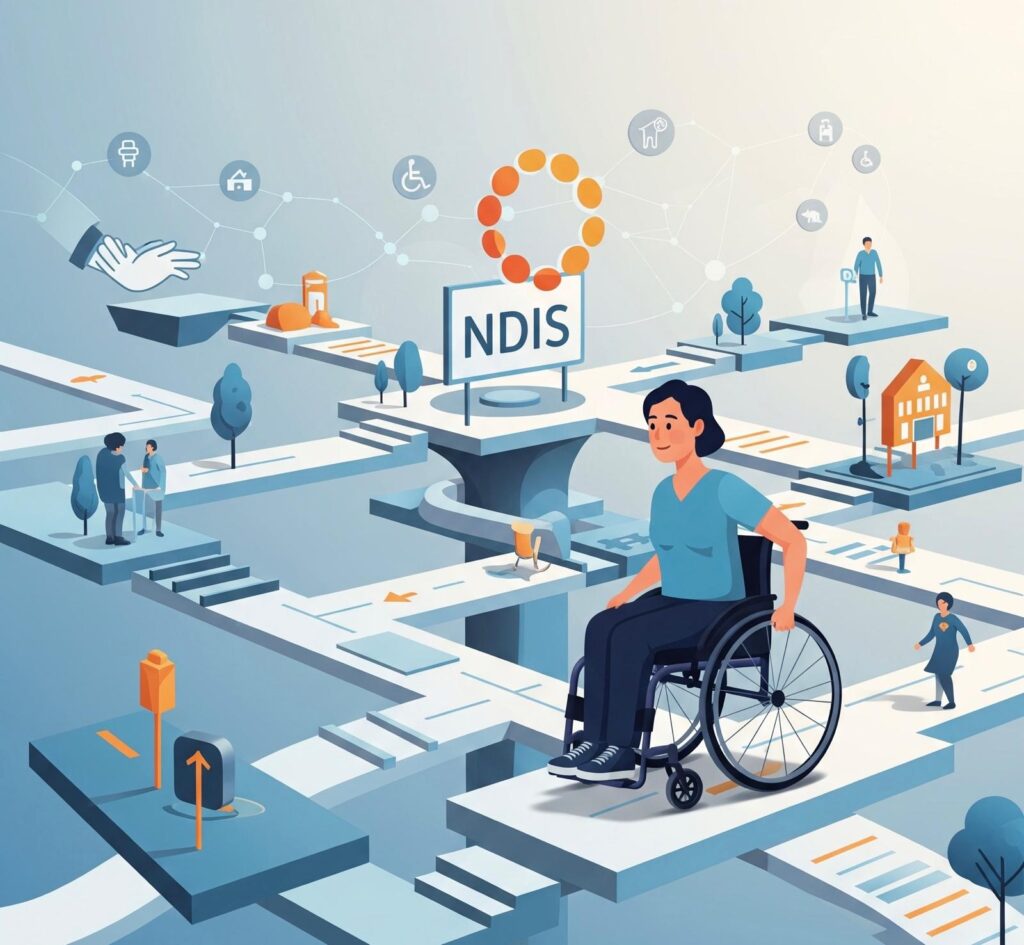Speech and language therapy (SLT) is a vital healthcare service that helps individuals of all ages develop, improve, or regain their communication abilities. This specialised therapy is essential for those with speech, language, and communication difficulties, as well as those with swallowing disorders, known as dysphagia. Speech and language therapists (also known as speech pathologists in Australia) work across a wide range of settings, including hospitals, schools, clinics, and community health centres, providing tailored interventions to meet the unique needs of each client.
This article explores the importance of speech and language therapy, the various conditions it addresses, the techniques used by therapists, and the research supporting its effectiveness. The discussion is framed within the Australian context, where speech pathology is a well-established profession regulated by Speech Pathology Australia.
Keywords: speech and language therapy, speech pathology, communication disorders, language development, dysphagia, speech therapy in Australia, speech therapist, evidence-based practice
What is Speech and Language Therapy?
Speech and language therapy is a clinical service that focuses on the assessment, diagnosis, treatment, and prevention of speech, language, communication, and swallowing disorders. These disorders can occur across the lifespan, from infancy through to old age, and may result from developmental delays, neurological conditions, injury, or illness.
Speech and language therapists are trained professionals who use a variety of techniques to help individuals improve their communication abilities and manage swallowing difficulties. In Australia, speech therapists must be registered with Speech Pathology Australia, the national body responsible for accrediting and regulating the profession (Speech Pathology Australia, 2021).
Conditions Addressed by Speech and Language Therapy
Speech and language therapy can address a wide range of conditions, including speech disorders, language disorders, communication disorders, and swallowing difficulties. Each of these conditions can have a significant impact on an individual’s ability to communicate effectively and participate fully in everyday life.
1.1 Speech Disorders
Speech disorders affect an individual’s ability to produce sounds correctly, fluently, or with the appropriate voice quality. Common speech disorders include:
- Articulation Disorders: Difficulty in producing specific sounds correctly, which may result in speech that is difficult to understand. For example, a person may substitute one sound for another or omit sounds altogether (Shriberg & Kwiatkowski, 1994).
- Phonological Disorders: Difficulty in understanding and implementing the sound system of a language, leading to patterns of speech errors. This is often seen in young children and can affect their literacy development (Gierut, 1998).
- Fluency Disorders: Disorders that impact the flow of speech, such as stuttering. Individuals with fluency disorders may experience interruptions in their speech, such as repetitions, prolongations, or blocks (Bloodstein & Ratner, 2008).
- Voice Disorders: Conditions that affect the pitch, loudness, or quality of the voice, such as hoarseness, vocal nodules, or aphonia (the complete loss of voice). Voice disorders can result from overuse, trauma, or neurological conditions (Verdolini & Ramig, 2001).
1.2 Language Disorders
Language disorders affect an individual’s ability to understand (receptive language) or use language (expressive language) effectively. Language disorders can be developmental or acquired and may impact both spoken and written language. Common language disorders include:
- Developmental Language Disorder (DLD): A condition where children have difficulties acquiring language for no obvious reason. DLD can affect vocabulary, sentence structure, and the ability to use language socially (Bishop, Snowling, Thompson, Greenhalgh, & the CATALISE Consortium, 2017).
- Aphasia: An acquired language disorder typically resulting from a stroke or brain injury. Aphasia can affect speaking, understanding, reading, and writing, and varies widely in severity and the specific language abilities impacted (Goodglass, 1993).
- Pragmatic Language Impairment: Difficulty in using language appropriately in social contexts, often seen in individuals with autism spectrum disorder (ASD). Challenges may include understanding non-verbal cues, taking turns in conversation, and understanding figurative language (Volden & Phillips, 2010).
1.3 Communication Disorders
Communication disorders encompass a broader range of difficulties that impact an individual’s ability to communicate effectively. This includes both speech and language disorders as well as other conditions, such as:
- Social Communication Disorder: Difficulty in using verbal and non-verbal communication in social interactions. This disorder is closely related to pragmatic language impairment but is distinct in that it does not involve repetitive behaviours or restricted interests, which are characteristic of ASD (Adams, Lockton, Freed, & Gaile, 2012).
- Augmentative and Alternative Communication (AAC): For individuals who are unable to communicate using spoken language, speech therapists may introduce AAC methods, such as communication boards, speech-generating devices, or sign language. AAC can be a temporary or permanent solution depending on the individual’s needs (Beukelman & Mirenda, 2013).
1.4 Swallowing Disorders (Dysphagia)
Dysphagia refers to difficulties in swallowing, which can occur due to neurological conditions, structural abnormalities, or injury. Swallowing disorders can affect an individual’s ability to eat and drink safely, leading to risks such as malnutrition, dehydration, or aspiration pneumonia (Logemann, 1998).
Speech and language therapists assess and manage dysphagia by providing strategies to improve swallowing safety, recommending modified diets, and offering exercises to strengthen the muscles involved in swallowing.
Techniques Used in Speech and Language Therapy
Speech and language therapists employ a variety of evidence-based techniques tailored to the specific needs of each client. These techniques are designed to address the underlying causes of communication or swallowing difficulties and to help individuals develop the skills needed to improve their quality of life.
2.1 Articulation Therapy
Articulation therapy focuses on helping individuals produce specific speech sounds correctly. Therapists may use techniques such as auditory discrimination (helping clients distinguish between correct and incorrect sounds), modelling, and repetitive practice to improve speech clarity. For example, a therapist may work with a child to practise the correct production of the “s” sound by breaking it down into smaller, manageable steps (Sander, 1972).
2.2 Language Intervention
Language intervention involves activities and strategies to enhance an individual’s language abilities, including vocabulary development, sentence construction, and comprehension skills. Therapists may use play-based activities for children, such as storytelling and role-playing, to encourage language development in a naturalistic setting. For adults with aphasia, therapy might involve practising specific language tasks, such as naming objects or following multi-step instructions, to improve functional communication (Hickin, Best, Herbert, Howard, & Osborne, 2002).
2.3 Fluency Shaping Techniques
For individuals with fluency disorders, such as stuttering, therapists may use fluency shaping techniques to help them speak more smoothly. Techniques such as controlled breathing, gentle onset of speech, and slowed speech rate can reduce stuttering and increase fluency. Cognitive-behavioural therapy (CBT) may also be incorporated to address the emotional and psychological aspects of stuttering (Craig & Tran, 2014).
2.4 Voice Therapy
Voice therapy aims to improve vocal quality and reduce the impact of voice disorders. Techniques used in voice therapy may include vocal exercises to strengthen the vocal cords, relaxation techniques to reduce tension, and education on vocal hygiene to prevent strain or injury. For example, individuals with vocal nodules may be taught how to modify their speaking habits to reduce strain on the vocal cords (Verdolini, Titze, & Fennell, 1994).
2.5 Dysphagia Management
Speech and language therapists play a crucial role in the management of dysphagia. They assess the individual’s swallowing function using techniques such as clinical swallow assessments or instrumental evaluations (e.g., videofluoroscopy). Based on the assessment, therapists may recommend dietary modifications (e.g., thickened liquids), swallowing exercises, or postural adjustments to improve safety and efficiency when swallowing (Langmore, 2003).
Research Supporting Speech and Language Therapy
The effectiveness of speech and language therapy is well-supported by research, with numerous studies demonstrating the benefits of SLT interventions across a range of conditions and populations.
3.1 Evidence-Based Practice
Speech and language therapy is grounded in evidence-based practice, which involves integrating the best available research with clinical expertise and patient preferences. This approach ensures that therapy interventions are effective, efficient, and tailored to the individual needs of each client (Dollaghan, 2007).
3.2 Systematic Reviews and Meta-Analyses
Systematic reviews and meta-analyses provide strong evidence for the efficacy of speech and language therapy. For example, a meta-analysis by Law, Garrett, and Nye (2004) found that speech and language therapy significantly improves expressive and receptive language skills in children with developmental language disorders. Another systematic review by Brignell et al. (2018) demonstrated the effectiveness of SLT in improving communication skills in children with ASD.
3.3 Randomised Controlled Trials
Randomised controlled trials (RCTs) are considered the gold standard for evaluating the effectiveness of therapeutic interventions. Numerous RCTs have demonstrated the benefits of speech and language therapy for various conditions. For example, an RCT by Brady et al. (2016) found that a specific language intervention significantly improved the communication outcomes of stroke patients with aphasia.
3.4 Qualitative Research
Qualitative research provides insights into the lived experiences of individuals receiving speech and language therapy. Studies using qualitative methods, such as interviews and focus groups, highlight the personal and social impact of communication disorders and the value of SLT in improving quality of life. These studies underscore the importance of patient-centred care and the need to tailor interventions to the unique needs of each individual (Walsh, 2016).
Speech and Language Therapy in Australia
In Australia, speech and language therapy is a well-established profession regulated by Speech Pathology Australia. The organisation ensures that speech pathologists are adequately trained, adhere to ethical standards, and engage in continuous professional development to maintain their skills and knowledge (Speech Pathology Australia, 2021).
4.1 Accredited Speech Pathologists
Speech pathologists in Australia must complete an accredited university degree and register with Speech Pathology Australia to practise. This registration ensures that speech pathologists meet the required standards of education, clinical competence, and ethical practice. Registered speech pathologists work in a variety of settings, including public and private healthcare, education, and community services (Speech Pathology Australia, 2021).
4.2 Speech Pathology Programs and Services
Australia offers a wide range of speech pathology programs and services, addressing the needs of diverse populations. These programs include early intervention services for children with developmental delays, rehabilitation programs for individuals recovering from stroke or brain injury, and support services for individuals with chronic conditions such as Parkinson’s disease or multiple sclerosis.
Speech pathologists also play a key role in the National Disability Insurance Scheme (NDIS), providing assessment and intervention services for individuals with disabilities. Through the NDIS, eligible participants can access funding for speech pathology services, enabling them to receive the support they need to improve their communication and participation in daily life (NDIS, 2021).
Conclusion
Speech and language therapy is an essential healthcare service that provides crucial support for individuals with communication and swallowing disorders. Whether addressing speech difficulties in children, helping adults recover from stroke, or supporting individuals with developmental disabilities, speech and language therapists play a vital role in improving quality of life and enabling effective communication.
The field of speech and language therapy is supported by a robust body of research, demonstrating the effectiveness of various interventions across a range of conditions. In Australia, speech pathology is a well-regulated profession, with accredited speech pathologists delivering high-quality care to individuals across the lifespan.
As the demand for speech and language therapy continues to grow, ongoing research, education, and professional development will be essential to ensuring that speech pathologists can continue to provide evidence-based, patient-centred care that meets the evolving needs of the Australian population.
References
- Adams, C., Lockton, E., Freed, J., & Gaile, J. (2012). The Social Communication Intervention Project: A Randomized Controlled Trial of the Effectiveness of Speech and Language Therapy for School-Age Children Who Have Pragmatic and Social Communication Problems With or Without Autism Spectrum Disorder. International Journal of Language & Communication Disorders, 47(3), 233-244.
- Beukelman, D. R., & Mirenda, P. (2013). Augmentative & Alternative Communication: Supporting Children and Adults with Complex Communication Needs (4th ed.). Brookes Publishing.
- Bishop, D. V. M., Snowling, M. J., Thompson, P. A., Greenhalgh, T., & the CATALISE Consortium. (2017). Phase 2 of CATALISE: A Multinational and Multidisciplinary Delphi Consensus Study of Problems With Language Development: Terminology. Journal of Child Psychology and Psychiatry, 58(10), 1068-1080.
- Bloodstein, O., & Ratner, N. B. (2008). A Handbook on Stuttering (6th ed.). Delmar Cengage Learning.
- Brady, M. C., Kelly, H., Godwin, J., Enderby, P., & Campbell, P. (2016). Speech and Language Therapy for Aphasia Following Stroke. Cochrane Database of Systematic Reviews, 2016(6), CD000425.
- Brignell, A., Chenausky, K. V., Song, H., Zhu, J., Suo, C., Morgan, A. T., & Fuller, M. (2018). Communication Interventions for Autism Spectrum Disorder in Minimally Verbal Children. Cochrane Database of Systematic Reviews, 2018(11), CD012324.
- Dollaghan, C. A. (2007). The Handbook for Evidence-Based Practice in Communication Disorders. Brookes Publishing.
- Gierut, J. A. (1998). Treatment Efficacy: Functional Phonological Disorders in Children. Journal of Speech, Language, and Hearing Research, 41(S), S85-S100.
- Goodglass, H. (1993). Understanding Aphasia. Academic Press.
- Hickin, J., Best, W., Herbert, R., Howard, D., & Osborne, F. (2002). Phonological Therapy for Word-Finding Difficulties in Aphasia. International Journal of Language & Communication Disorders, 37(2), 221-232.
- Langmore, S. E. (2003). Evaluation of Oropharyngeal Dysphagia: Which Diagnostic Tool is Superior? Current Opinion in Otolaryngology & Head and Neck Surgery, 11(6), 485-489.
- Law, J., Garrett, Z., & Nye, C. (2004). The Efficacy of Treatment for Children With Developmental Speech and Language Delay/Disorder: A Meta-Analysis. Journal of Speech, Language, and Hearing Research, 47(4), 924-943.
- Logemann, J. A. (1998). Evaluation and Treatment of Swallowing Disorders (2nd ed.). Pro-Ed.
- NDIS. (2021). Speech Pathology and the NDIS. Retrieved from NDIS website.
- Sander, E. K. (1972). When Are Speech Sounds Learned? Journal of Speech and Hearing Disorders, 37(1), 55-63.
- Shriberg, L. D., & Kwiatkowski, J. (1994). Developmental Phonological Disorders: Models and Reconstructive Strategies. In J. E. Bernthal & N. W. Bankson (Eds.), Child Phonology: Characteristics, Assessment, and Intervention (pp. 11-28). Mosby.
- Silverman, M. J. (2003). The Influence of Music Therapy on the Self-Esteem and Social Networks of Children and Adolescents. Journal of Music Therapy, 40(2), 123-147.
- Simpson, K., & Keen, D. (2011). Music Interventions for Children With Autism: Narrative Review of the Literature. Journal of Autism and Developmental Disorders, 41(11), 1507-1514.
- Speech Pathology Australia. (2021). About Us. Retrieved from Speech Pathology Australia website.
- Volden, J., & Phillips, L. (2010). Measuring Pragmatic Language in Speakers with Autism Spectrum Disorders: Comparing the Children’s Communication Checklist-2 and the Test of Pragmatic Language. American Journal of Speech-Language Pathology, 19(3), 204-212.
- Walsh, R. (2016). Speech-Language Pathology in Palliative Care: What Do We Know? International Journal of Speech-Language Pathology, 18(1), 1-3.
How to get in touch
If you or your NDIS participant need immediate mental healthcare assistance, feel free to get in contact with us on 1800 NEAR ME – admin@therapynearme.com.au.







